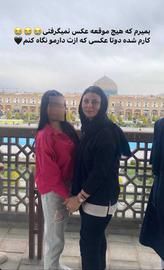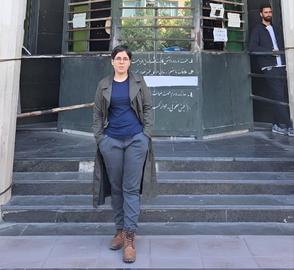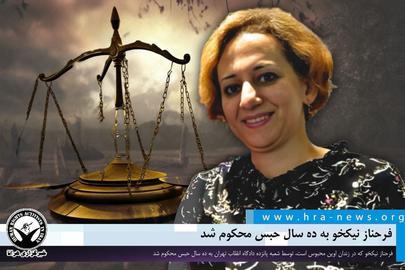Many a night, stargazers, armed with binoculars, wait long hours until dawn for the planet Venus to adorn the sky with its molten color. The surface of this cloud-swaddled planet includes volcanoes and large impact craters. Some of these geologic features have names, while others are identified only by coordinates. A crater with a diameter of 30 kilometers is named after a woman who was born almost a century ago in Iran and spent her life finding scientific ways to keep humans alive and healthy. Azer Andami, an Iranian microbiologist, is the only woman from Iran whose name and fame has reached Venus.
Andami was born on December 8, 1926, in Saghari Sazan (“Shoemakers”), the oldest neighborhood of Rasht, the capital of Gilan province. She had three older brothers.
Her dazzling intelligence came to light when she was a small child. She finished elementary school a year early and went to Forough High School in Rasht but, after she received her 9th-grade certificate, his father did not allow her to continue her education. He believed that this level of formal education was enough for a girl and the most appropriate job for a woman was to become a teacher. So he sent her to the Junior Teacher’s Academy in Rasht.
In 1947, one year after graduating from the academy, Andami was hired by the Ministry of Culture as a teacher. But she was eager to learn more. She continued her education while working as a teacher and four years later, in 1951, received her high school diploma in natural sciences.
Two years later Andami was accepted by Tehran University’s School of Medicine and graduated in six years. Then she specialized in gynecology, was hired by the Ministry of Health and started working for Pasteur Institute of Iran, one of the oldest leading research and public health centers in the Middle East.
Andami’s creative and inquisitive mind allowed her to become a researcher. She led and completed research in the field of bacteriology of hospital infections, and was able to publish the results of this research in reputable medical journals. Then, on a scholarship from Pasteur Institute, she went to Paris to specialize in bacteriology and received her degree in 1967.
Andami’s deep knowledge of bacteriology enabled her to develop a vaccine against El Tor, a strain of cholera bacterium. It was the dominant strain in the cholera pandemic that started in 1961 in Java, Indonesia, and moved westward to reach Iran and its neighbors.
To fight this pandemic, Pasteur Institute let its microbiology lab have complete use of all the institute’s resources and facilities and put the project under the full control of Andami. She worked tirelessly and without taking breaks of any kind until the project reached its goal: a vaccine to prevent contracting the disease that spread through human feces and contaminated water and food.
Pasteur Institute produced 9.5 million cholera vaccines and the inoculation of Iranians started, preventing the spread of El Tor and eventually stopping the pandemic in Iran. The vaccine was so effective that it went into mass production and was exported to neighboring countries.
To acknowledge this significant achievement, Pasteur Institute put Andami in charge of its cholera and diphtheria division. But her passion for gaining knowledge to help humanity was not diminished and, in 1974, when she was 48, she received a degree in clinical laboratory science. She frequently traveled to Belgium and France for study and research, and wrote many research papers that were published in international scientific journals.
Andami retired shortly before the 1979 revolution but, even after retirement, sitting at home was not an option for her. She agreed to head Bahonar Hospital’s laboratory and treated patients at an obstetrics and gynecology clinic that belonged to her husband, Mansour Khalatbary.
Andami collapsed one day while examining a patient, and was diagnosed with a brain tumor. On August 19, 1984, she died of a pulmonary embolism, aged only 57, and was buried in Behesht Zahra Cemetery in Tehran.
“She was a hardworking and determined woman. In this institute, she never stopped working and researching for a single day, and I have never seen a woman with her perseverance and effort. She was one of the few people who the more she knew, the more she understood that there are many things she does not know, and her constant efforts and the dynamics and movement of her life indicate this claim,” said a colleague of hers at Pasteur Institute.
After the death of her mother, Azar’s daughter Azarmidokht Khalatbary sent a letter to the International Astronomical Union (IAU) in Paris, describing her contributions to humanity. As a result, on August 25, 1992, the institute named a crater on Venus “Andami” in her honor.
The city of her birth, Rasht, also named a street after the doctor and installed a bust of her.
visit the accountability section
In this section of Iran Wire, you can contact the officials and launch your campaign for various problems
























comments